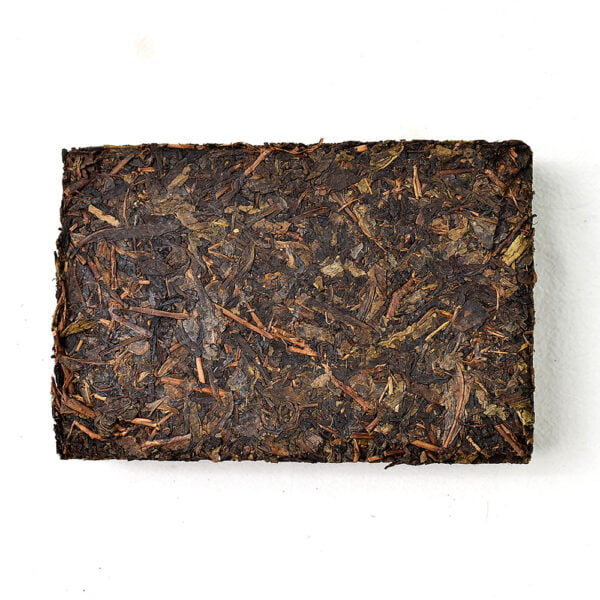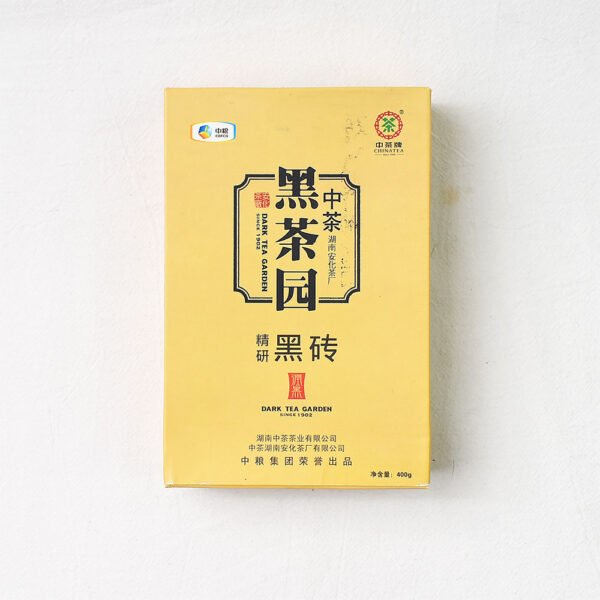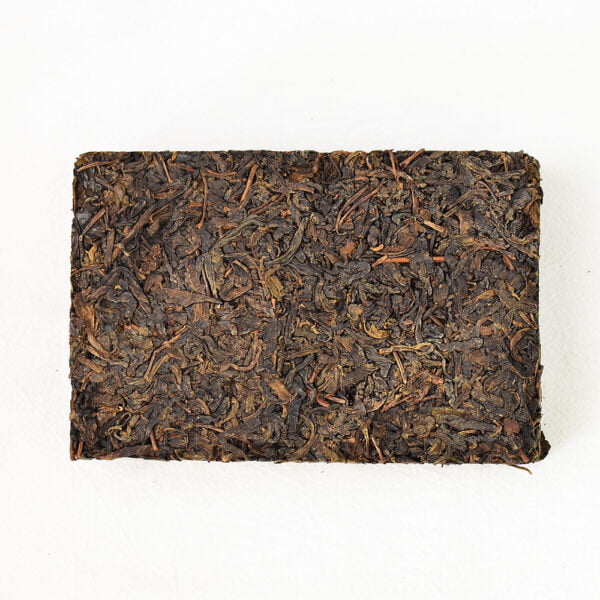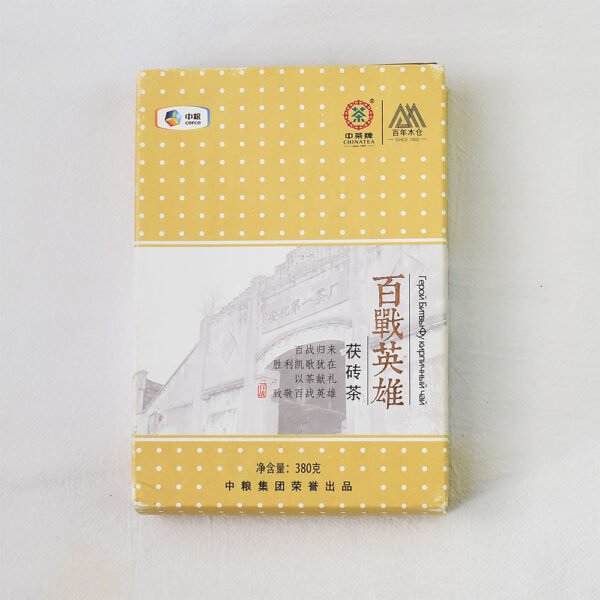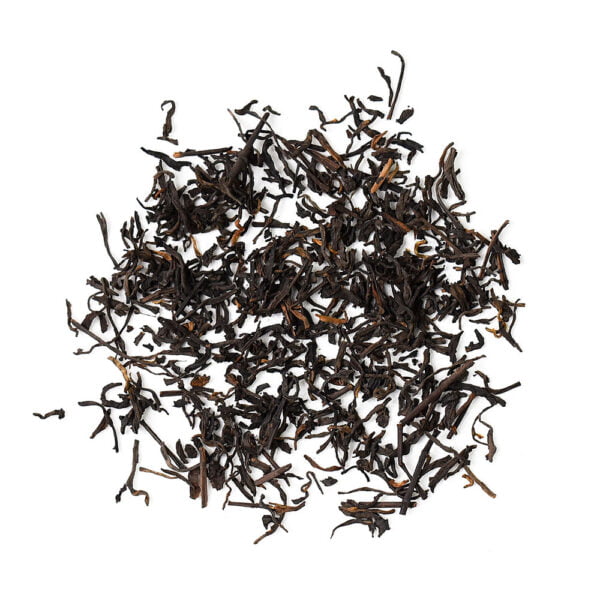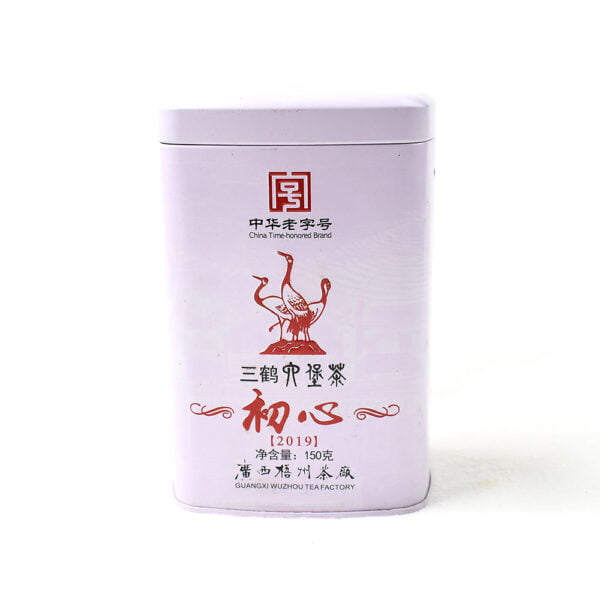Some Chinese Dark Tea
Hunan Dark Tea (Fu Cha, Qian Liang Cha, Hei Zhuan, San Jian), Sichuan Zang Cha, An Cha and Guangxi Liu Bao Cha, etc.
Although dark tea is very similar to Ripe Pu-erh; however, they are not the same.
The Differences Compared to Pu-erh Tea
The primary raw material of Dark Tea is small/medium-leaf tea species compared with Yunan big leaves species made Pu-erh tea.
- Different processing method
The processing steps of making dark tea are different from Pu-erh tea including picking, fixation (kill-green), rolling, pilling, repeated rolling, baking, steaming, and drying. Some dark tea such as Fu Cha dark tea has additional steps – ‘Fa Hua’. The aim of Fa Hua is to promote the growth and reproduction of the dominant strain – Eurotium cristatum which is the main reason for adding special flavour to the Fu Cha dark tea. Besides ‘Fa Hua’, some dark tea also requires secondary fermentation.
Pu-erh tea has fewer processing steps than dark tea and withering is required before fixation (kill-green). In other words, the technology of making dark tea destroys the enzymes in the fresh tea leaves completely, other than the skill of making Pu-erh tea which only inactivates the activity of the enzyme. During the tea fixation, the temperature for dark tea is 280°C to 320°C in contrast to the temperature for Pu-erh tea is 85°C.
Steeping, Brewing and Serving
For Gongfu Style: (Recommend using (Yixing) Clay Teapot and Gaiwan)
Detailed processes:
- Warm the Gaiwan/tiny teapot with hot water; discard the water afterward
- Add 1g Dark tea for every 50ml of water (recommend 7g-10g tea leaves, adjust by personal taste)
- Pour hot water (100 °C) into the clay teapot / Gaiwan, tilt it, slowly rotate it two times, and quickly discard the water (this step is for waking up tea leaves and stimulating the special aroma of the Dark tea)
- Refill clay teapot/Gaiwan with hot water
- Infuse tea for around 7s – 10s for the first brew, extending extra 10s-20s infusion time for the following brew.
- Pour the steeped tea into a serving cup and divided it into small teacups and serve
- Repeat 8-15 times depending on personal taste.
Using Teapot to Boil the tea (Recommend using a clay teapot):
- Add 10-15g tea leaves (for 6-8 people, adjust by personal taste) into the clay teapot.
- Fill the teapot with hot water.
- Infuse tea for a while and then discard the water.
- Add cold water.
- Keep brewing for 1 min after the water is boiling and try the first round of the tea. For further brews, extend the boiling time to around 2-3 minutes.
- After the tea is boiled, simmer on the charcoal fire to get a better taste
- Can be re-brewed around 8-10 times
Storage of Dark Tea
- Keep ventilated and dry – Because dark tea is deeply fermented (fully fermented tea), a certain amount of humidity is necessary to accelerate aging. However, the humidity should be controlled otherwise the tea will be moldy.
- Avoid direct sunlight. If the dark tea is directly exposed to sunlight, the substances contained in the leaves will start to decompose, reducing the nutritional value and affecting the taste of the tea.
- Avoid mussy odours. Tea can absorb different sorts of odour extremely easily; therefore, it should not be stored alongside anything strong-smelling.
- Avoid airtight. Because of the special character of dark tea, it needs to absorb the moisture and trace elements in the air to support the transformation and metabolism of the microbial activities.
- Avoid storing it in the fridge.
Health Benefits of Dark Tea
- Rich dietary nutrition. Dark tea has very abundant nutrients including multiple vitamins, and minerals, as well as rich protein, amino acids, carbohydrates, etc. For people who live in the north-western region where the staple food is beef, lamb and cheese and lack of fresh fruits & vegetables, dark tea plays a very important role in daily life. It is an important source of essential minerals and various vitamins.
- Helps digestion and degreasing. The caffeine, vitamins, amino acids, and phospholipids contained inside dark tea can help the human body to digest and regulate fat metabolism.
- May help lipid-lowering and weight loss. High blood lipid content will cause lipids to be deposited on the blood vessel walls, which can cause atherosclerosis and thrombosis. Black tea has a very positive effect on fat degrading, anti-blood coagulation, promoting fibrinogen dissolution, and inhibiting platelet aggregation. It also can relax the blood vessel walls and increase the effective diameter of blood vessels. These positive impacts inhibit the formation of atherosclerotic plaque in the aorta and coronary artery wall.
- Antioxidant. Dark tea is not only rich in antioxidants such as theaflavins, theanine and tea polysaccharides, flavonoids, vitamin C, vitamin E, and D-carotene but also contains a large amount of antioxidant trace elements such as zinc, manganese, copper, and selenium. These elements have the function of scavenging free radicals.
- May lower blood sugar. The tea polysaccharide complex (tea polysaccharide) contained in dark tea is the main component of lowering blood sugar.
- May lower blood pressure. the unique amino acid theanine in tea can inhibit the increase in blood pressure by activating dopaminergic neurons.
- Sterilization and anti-inflammatory. The theaflavins contained inside the dark tea have antibacterial effects on botulinum bacteria, intestinal Bacteroides, staphylococcus aureus, and capsular bacteria.
People who should avoid drinking Dark tea
- People who have a fever.
- People who have liver problems.
- People who have neurasthenia.
- People who are pregnant.
- People who are breastfeeding.
- People who have ulcer problems.
- People who are malnourished.
- People who are drunk.
- People who are taking drugs.
- People who are anaemic.
- People who have urinary stone problems.





